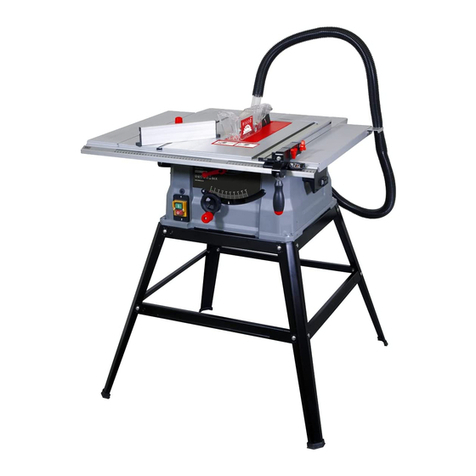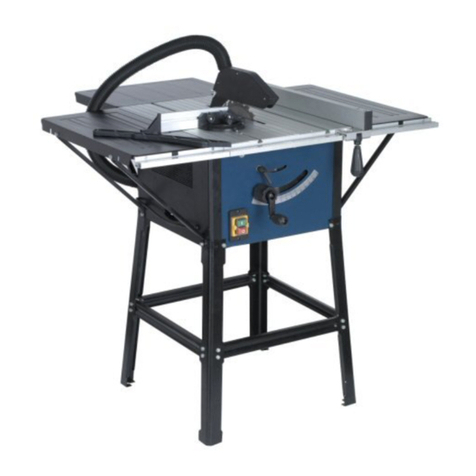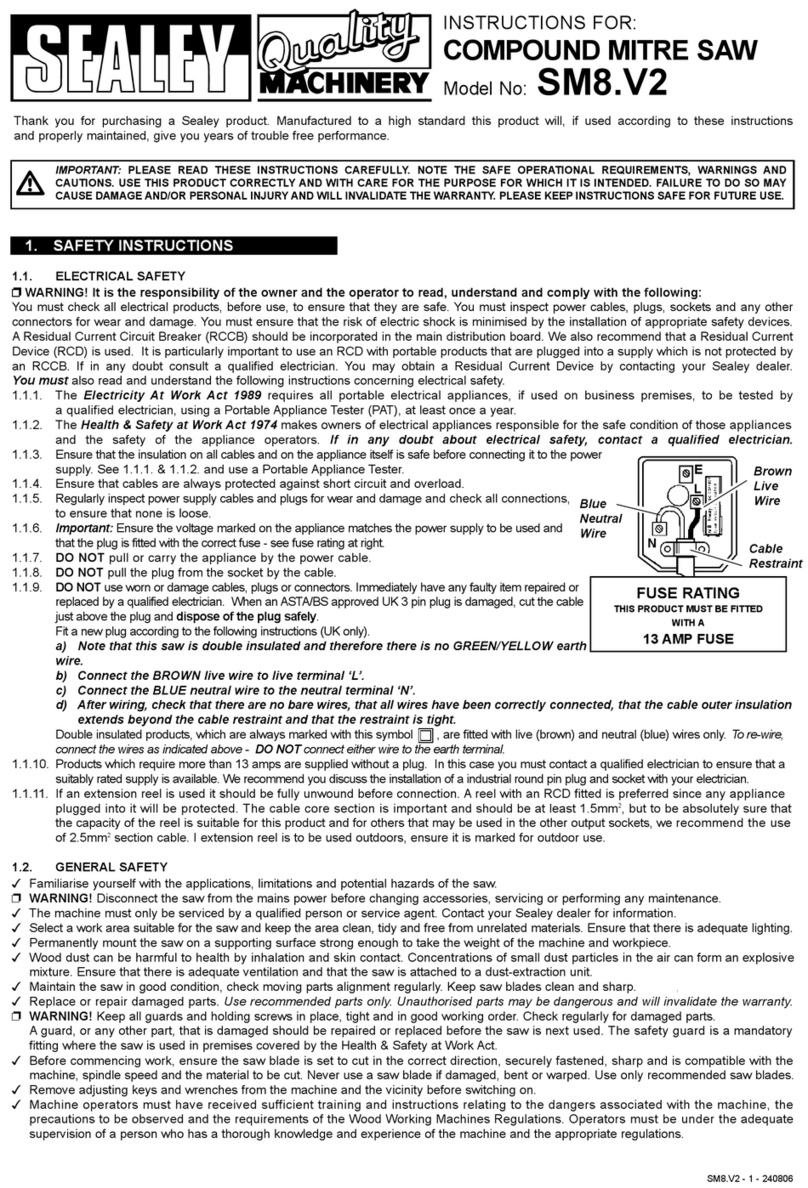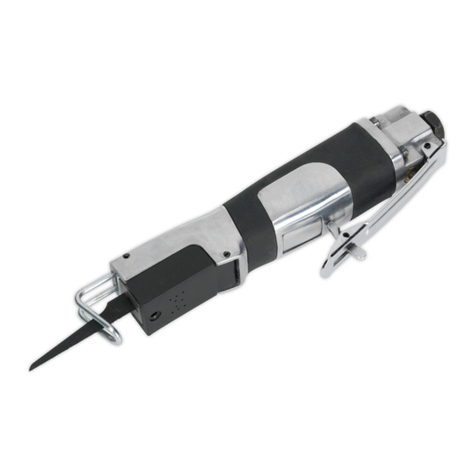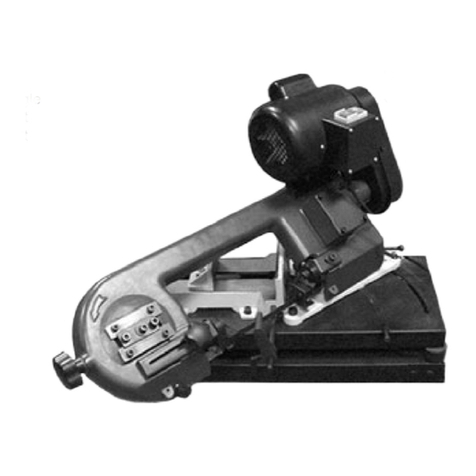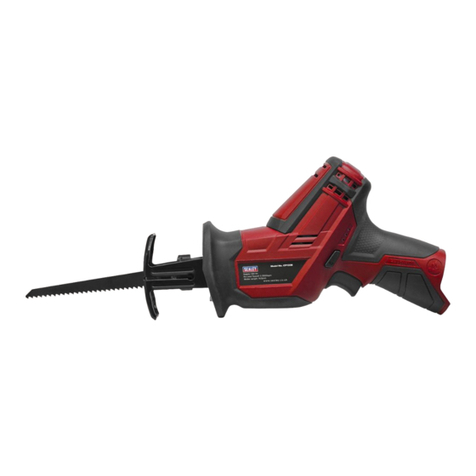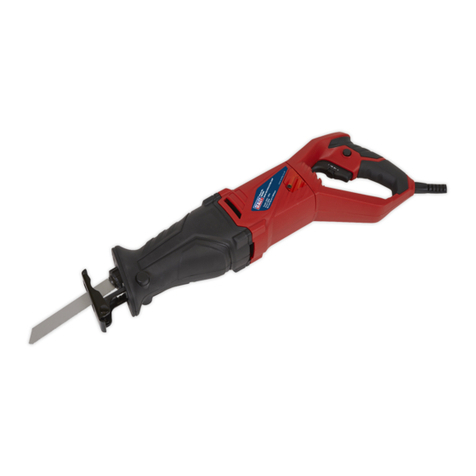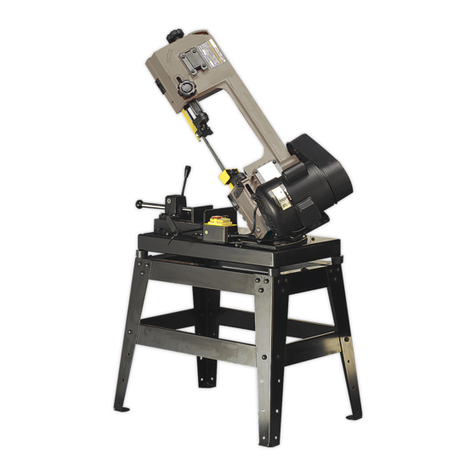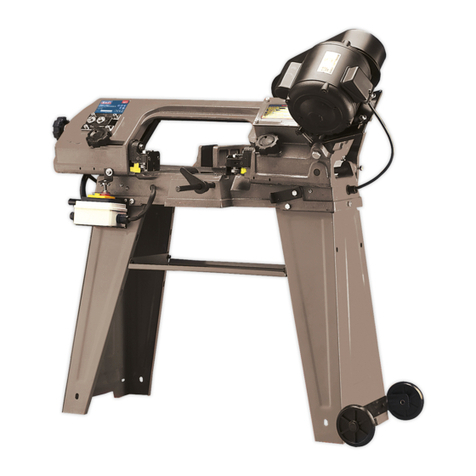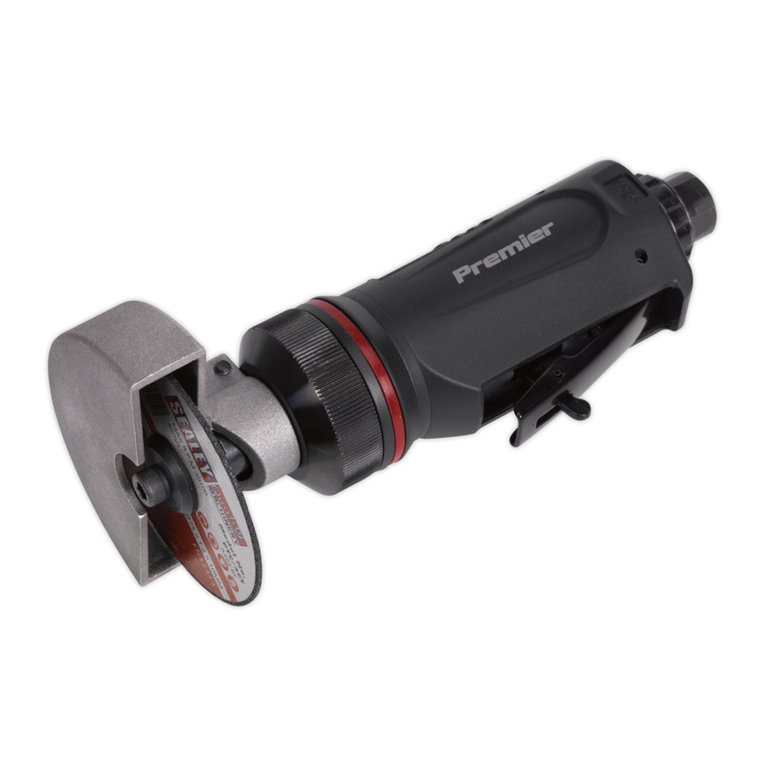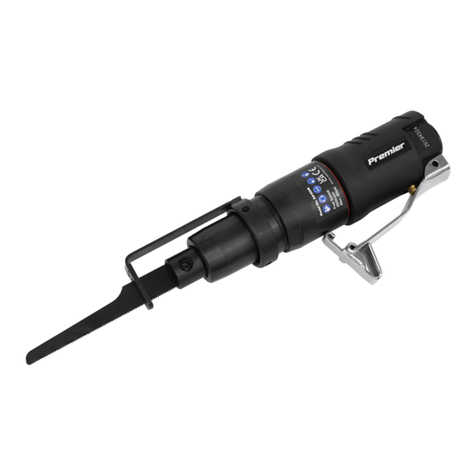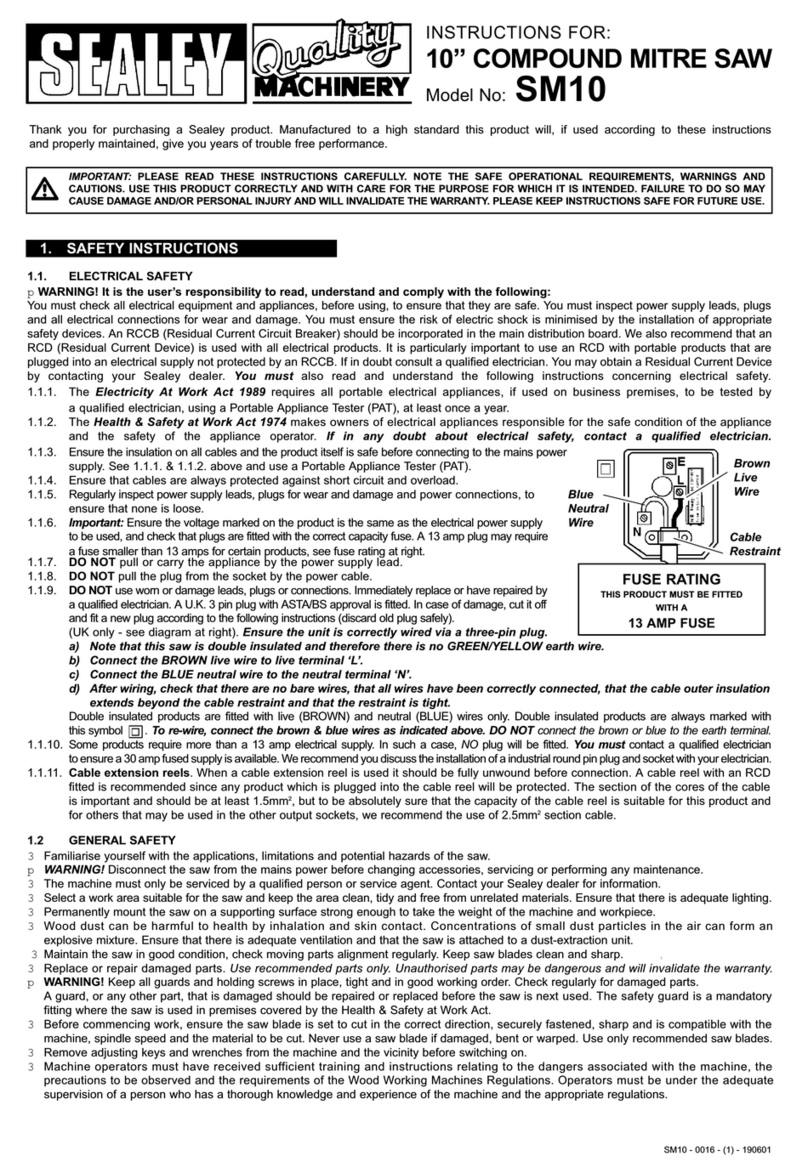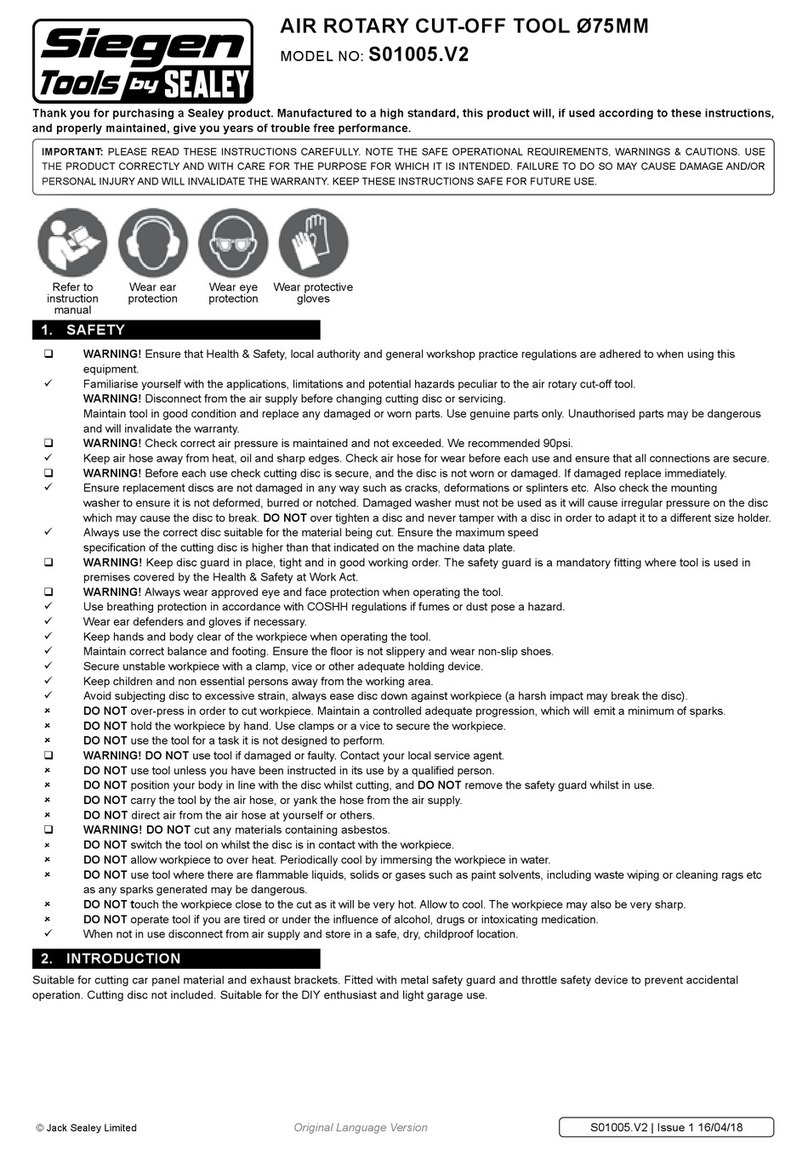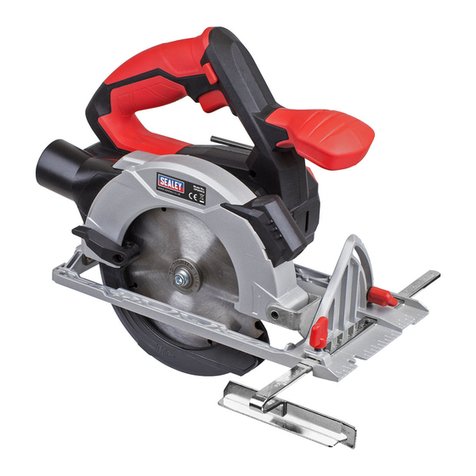
5.4.4. b) When blade is binding, or when interrupting a cut for any reason, release the trigger and hold the saw motionless in the material
until the blade comes to a complete stop.
5.4.5. Never attempt to remove the saw from the work or pull the saw backward while the blade is in motion or kickback may occur.
Investigate and take corrective actions to eliminate the cause of blade binding.
5.4.6. c) When restarting a saw in the workpiece, centre the saw blade in the kerf and check that saw teeth are not engaged into the
material. If saw blade is binding, it may walk up or kickback from the workpiece as the saw is restarted.
5.4.7. d) Support large panels to minimise the risk of blade pinching and kickback. Large panels tend to sag under their own weight.
Supports must be placed under the panel on both sides, near the line of cut and near the edge of the panel.
5.4.8. e) DO NOT use dull or damaged blades. Unsharpened or improperly set blades produce narrow kerf causing excessive friction, blade
binding and kickback.
5.4.9. f) Blade depth and bevel adjusting locking levers must be tight and secure before making cut. If blade adjustment shifts while cutting, it
may cause binding and kickback.
5.4.10. G) Use extra caution when sawing into existing walls or other blind areas. The protruding blade may cut objects that can cause
kickback.
5.5. LOWER GUARD FUNCTION
5.5.1. a) Check lower guard for proper closing before each use. DO NOT operate the saw if lower guard does not move freely and close
instantly. Never clamp or tie the lower guard into the open position. If saw is accidentally dropped, lower guard may be bent. Raise the
lower guard with the retracting handle and make sure it moves freely and does not touch the blade or any other part, in all angles and
depths of cut.
5.5.2. b) Check the operation of the lower guard spring. If the guard and the spring are not operating properly, they must be serviced before
use. Lower guard may operate sluggishly due to damaged parts, gummy deposits, or a build-up of debris.
5.5.3. c) Lower guard may be retracted manually only for special cuts such as “plunge cuts” and “compound cuts”. Raise lower guard by
retracting handle and as soon as blade enters the material, the lower guard must be released. For all other sawing, the lower guard
should operate automatically.
5.5.4. d) Always observe that the lower guard is covering the blade before placing saw down on bench or oor. An unprotected, coasting
blade will cause the saw to walk backwards, cutting whatever is in its path. Be aware of the time it takes for the blade to stop after
switch is released.
5.6. GUARD FUNCTION
5.6.1. a) Check guard for proper closing before each use. DO NOT operate the saw if guard does not move freely and enclose the blade
instantly. Never clamp or tie the guard so that the blade is exposed. If saw is accidentally dropped, guard may be bent. Check to make
sure that guard moves freely and does not touch the blade or any other part, in all angles and depths of cut.
5.6.2. b) Check the operation and condition of the guard return spring. If the guard and the spring are not operating properly, they must be
serviced before use. Guard may operate sluggishly due to damaged parts, gummy deposits, or a build-up of debris.
5.6.3. c) Assure that the base plate of the saw will not shift while performing the “plunge cut” when the blade bevel setting is not at 90°. Blade
shifting sideways will cause binding and likely kick back.
5.6.4. d) Always observe that the guard is covering the blade before placing saw down on bench or oor. An unprotected, coasting blade will
cause the saw to walk backwards, cutting whatever is in its path. Be aware of the time it takes for the blade to stop after switch is
released.
6. MAINTENANCE
WARNING! Remove battery from tool before performing any maintenance or making adjustments.
6.1. Remove dust with a soft bristled brush.
8DO NOT use solvents. Clean with a soft damp cloth. DO NOT use compressed air (risk of ejection).
6.2. Tool does not require any special maintenance (it is permanently lubricated inside). Professional repair only, contact authorised
service centre.
6.3. STORAGE: Store in a child free,dry location.
WARNING! – Risk of Hand Arm Vibration Injury.
This tool may cause Hand Arm Vibration Syndrome if its use is not managed adequately.
This tool is subject to the vibration testing section of the Machinery Directive 2006/42/EC.
This tool is to be operated in accordance with these instructions.
Measured vibration emission value (a): 3.368 m/s²
Uncertainty value (k): 1.5 m/s²
Please note that the application of the tool to a sole specialist task may produce a
different average vibration emission. We recommend that a specific evaluation of the vibration emission is conducted prior to
commencing with a specialist task.
A health and safety assessment by user (or employer) will need to be carried out to determine suitable duration of use for each tool.
NB: Stated Vibration Emission values are type-test values and are intended to be typical.
Whilst in use, the actual value will vary considerably from and depend on many factors.
Such factors include; the operator, the task and the inserted tool or consumable.
NB: ensure that the length of leader hoses is sufficient to allow unrestricted use, as this also helps to reduce vibration.
The state of maintenance of the tool itself is also an important factor, a poorly maintained tool will also increase the risk of Hand Arm
Vibration Syndrome.
Health surveillance.
We recommend a programme of health surveillance to detect early symptoms of vibration injury so that management procedures can
be modified accordingly.
Personal protective equipment.
We are not aware of any personal protective equipment (PPE) that provides protection against vibration injury that may result from the
uncontrolled use of this tool. We recommend a sufficient supply of clothing (including gloves) to enable the operator to remain warm
and dry and maintain good blood circulation in fingers etc. Please note that the most effective protection is prevention, please refer to
the correct Use and Maintenance section in these instructions. Guidance relating to the management of hand arm vibration can be
found on the HSC website www.hse.gov.uk - Hand-Arm Vibration at Work.
Original Language Version
© Jack Sealey Limited CP108VCSBO Issue 1 19/04/21
